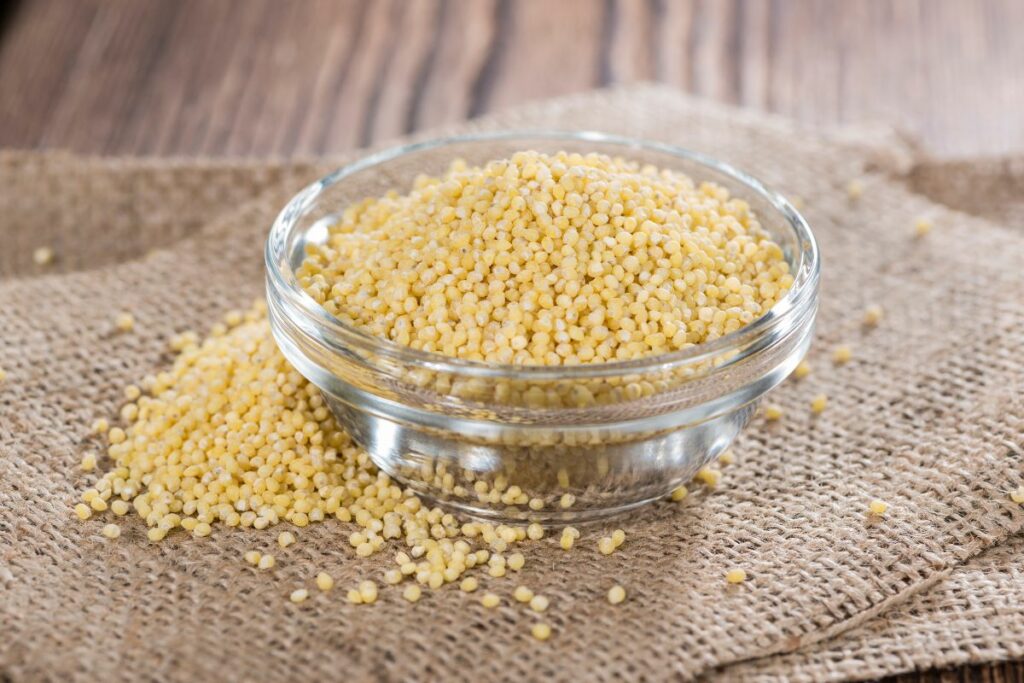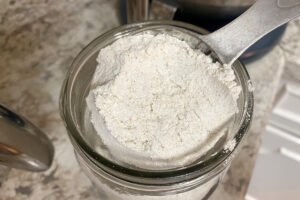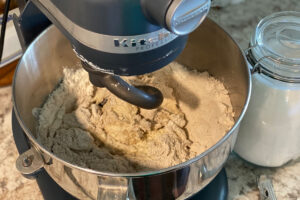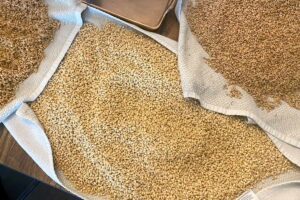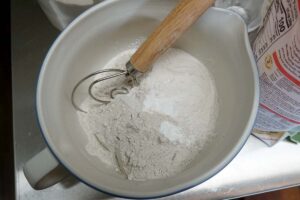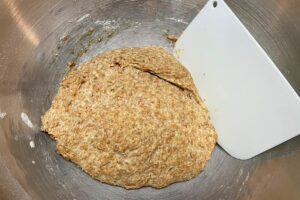Has someone ever told you that you need to eat plenty of superfoods? If so, you may be wondering what foods are classified as superfoods.
Millet is a food that is often celebrated as a superfood and it is a nutrient-dense food, but whether it qualifies as a “superfood” depends on how you define the term. The concept of a superfood doesn’t have a scientific definition and can vary based on popular health trends and marketing.
But in the grain world, Millet is often referred to a superfood because it’s high in essential nutrients. Some things that stand out are it’s health benefits:
- Nutrient profile: Millet is rich in essential nutrients like B-vitamins (especially niacin and thiamin), magnesium, phosphorus, and manganese. It also contains dietary fiber, which supports digestive health
- Gluten-free: Millet is naturally gluten-free, making it a valuable option for people with Celiac Disease or gluten sensitivities
- Antioxidants: Millet contains antioxidants, including phenolic compounds, which have potential health benefits by combating oxidative stress and inflammation
- Lower glycemic index (GI): Certain types of Millet, like Pearl Millet and Foxtail Millet, are considered low-GI foods compared to refined grains, which means they have a smaller impact on blood sugar levels
- Satiety: The fiber and complex carbohydrates in millet contribute to a feeling of fullness and sustained energy, which can aid in weight management
- Versatility: Millet can be used in a variety of dishes, from breakfast hot cereal to side dishes, salads, and baked goods, adding diversity to your diet
What is Millet?
Millet is a type of grain that comes from Poaceae, a grass family. It is particularly popular in India, where it is widely grown.
Millet has been cultivated for thousands of years and is widely consumed around the world, especially in regions of Africa and Asia. In India, millet is considered a staple food. Millet is known for its versatility, nutritional value, and ability to thrive in hot and dry climates, making it a staple in many diets.
With its mild taste, Millet is a versatile food that makes an amazing side dish for a range of different meals. It has a somewhat sweet flavor that’s paired with nutty and somewhat bitter notes, but it’s nutritional makeup varies between it’s five different types.
| Millet type | Description | Color | Protein content | Fiber content | Nutritional value | Best cooking method |
|---|---|---|---|---|---|---|
| Pearl Millet | Large pear-shaped seeds, widely grown | Pale yellow | Approx. 11g | Approx. 8g | Rich in B-vitamins, iron, fiber | Cooked as a hot cereal or to make flatbreads |
| Foxtail Millet | Thin, bristly spikes resembling foxtail | Yellow or brown | Approx. 12g | Approx. 3.5g | High in protein, iron, magnesium | Cooked as a rice substitute or hot cereal |
| Proso Millet | Small, round seeds often used in bird feed | Yellow or white | Approx. 13g | Approx. 2.2g | High protein content, B-vitamins | Cooked as side dish or in baked goods |
| Finger Millet | Small, finger-like seeds; known as “ragi” | Dark brown | Approx. 7g | Approx. 3.5g | Rich in calcium, iron, and fiber | Cooked as a hot cereal or to make flatbreads |
| Barnyard Millet | Resembles rice; used similarly to other grains | White | Approx. 6g | Approx. 5.5g | Good source of fiber, B-vitamins | Cooked as rice substitute or hot cereal |
What is a superfood?
The word “superfood” is tossed around all the time. Superfoods are simply foods that offer a large number of nutritional benefits.
These superfoods tend to be low in calories and rich in vitamins and minerals, thus offering lots of advantages to the people that consume them.
Among some of the foods that are considered superfoods are kale, beans, blueberries, garlic, avocados, bananas, and broccoli. But the truth is that there are no clear stipulations for superfoods, so everyone’s idea of what a superfood is will differ.
For me and my family, we consider beef to be the ultimate superfood and I often mix beef liver into our ground beef to easily get my family to eat more! But this looks different for every person and their specific health concerns.
Is Millet really a superfood?
Although there are other more super superfoods (like beef liver), for a grain, Millet stands on it’s own as a superfood. The reason for this is that it’s filled with macronutrients, namely protein.
It also contains a decent amount of vitamins and minerals, which can benefit the human body.
What is Millet rich in?
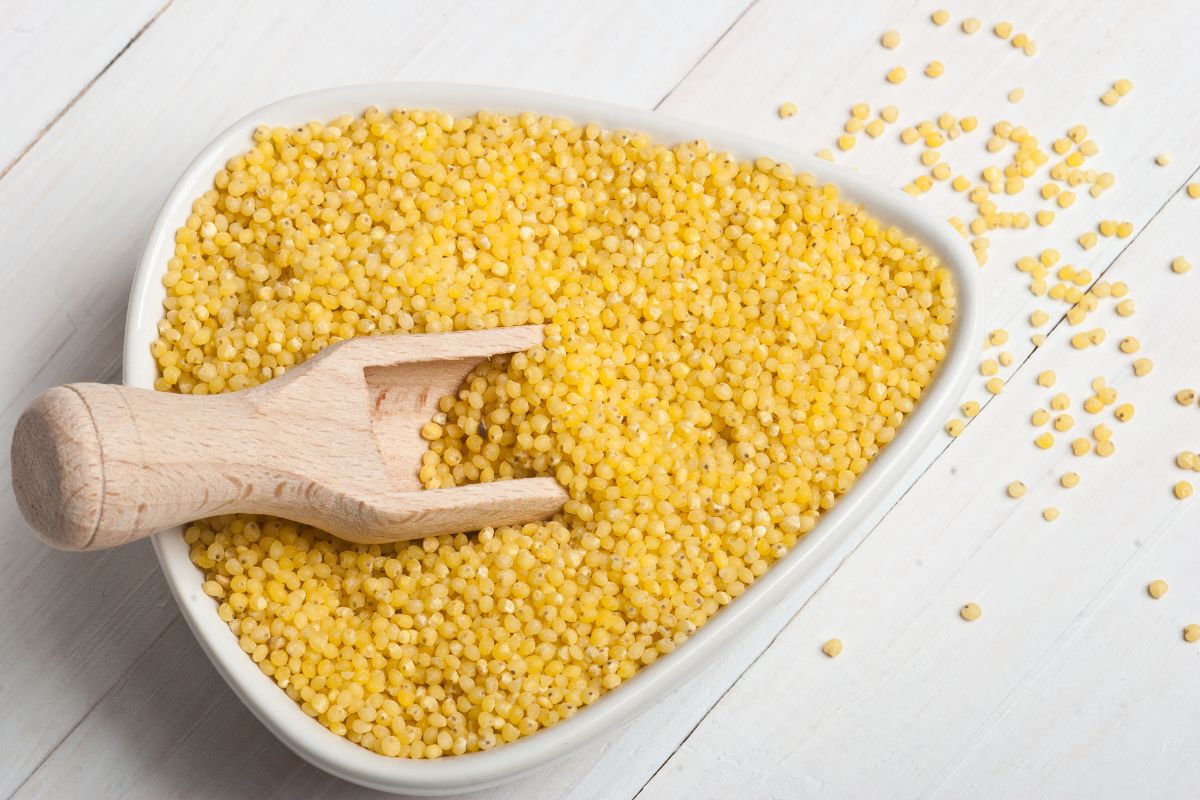
Millet is a superb source of multiple vitamins and minerals. Namely, it’s high in:
Protein
A serving of millet contains roughly 6 grams of protein. Though this may not be as high as other protein-rich foods that typically come from animals such as beef, chicken, eggs, or yogurt, Millet can nonetheless help you attain your daily protein requirements.
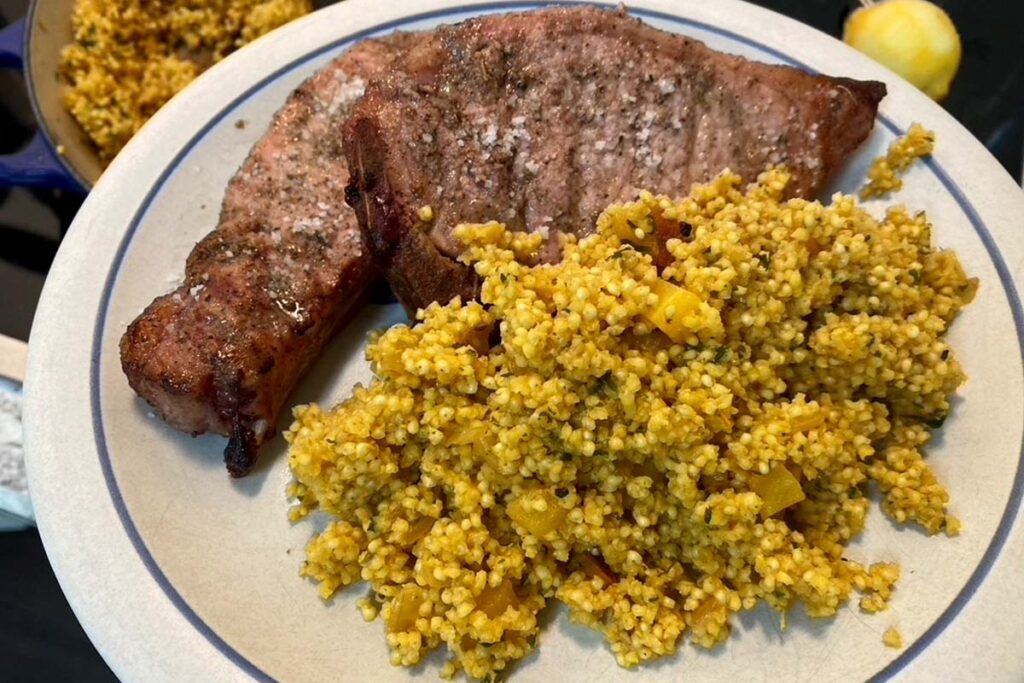
Protein is a particularly vital macronutrient for athletes. Made from amino acids, protein helps people to build muscles, the development of which will help athletic performance. It’s also vital for those who are wanting to avoid Type-2 Diabetes, people who are wanting to lose weight, or even just maintain your health.
So if you are looking for a grain to increase your protein intake, Millet is a fantastic option. I even pair it with a healthy protein as a side dish, making the protein for a meal even higher.
Antioxidants
Millet is a sensational source of antioxidants. Specifically, it’s rich in lipophilic antioxidants. These antioxidants include carotenoids, phenolic acids, and vitamin E.
Just bear in mind that different types of millet can contain different antioxidants, which is partially due to the processing method.
Foxtail Millet and Finger Millet tend to be especially high in antioxidants, making them valuable options if you wish to boost your antioxidant intake.
It’s essential to get plenty of antioxidants in your diet. The reason for this is that antioxidants fend off free radicals, which can cause cell damage.
Not to mention, antioxidants have been found to improve immune response and reduce the risk of developing certain diseases, such as heart disease.
Fiber
Additionally, Millet is considered a decent source of dietary fiber. While it may not be as rich in fiber as other grains, including Barley, Millet is nonetheless a good way of increasing your fiber content.
Fiber is crucial for health especially because it can help to regulate and maintain normal bowel movements. In addition, fiber can help you to lose weight healthily.
Certain types of Millet are higher in fiber than others. Pearl millet is considered a good source of fiber, as a serving of this grain contains around 3g of soluble dietary fibers and 5g of insoluble fibers.
What are the other benefits of Millet?
Millet isn’t just a popular food because of its mild taste and nutritional benefits. There are also other advantages to adding this grain to your diet, including:
It’s vegan
Because it does not contain any animal products, millet is completely vegan. As a result, it’s ideal for anyone who is following a vegan or vegetarian diet, particularly if you’re on the lookout for protein-rich foods.
It’s gluten-free
An additional benefit of millet is that it’s gluten-free. Unlike other grains, Millet is suitable for people who are following a gluten-free diet.
As a result, people with Celiac Disease and gluten intolerances can continue to eat Millet.
When buying Millet it’s best to check for a gluten-free label. This is because some Millet products may include additional ingredients, which may not be suitable for people with gluten intolerance, or processed in a facility that also processes non-gluten-free grains.
What are the advantages of Millet?
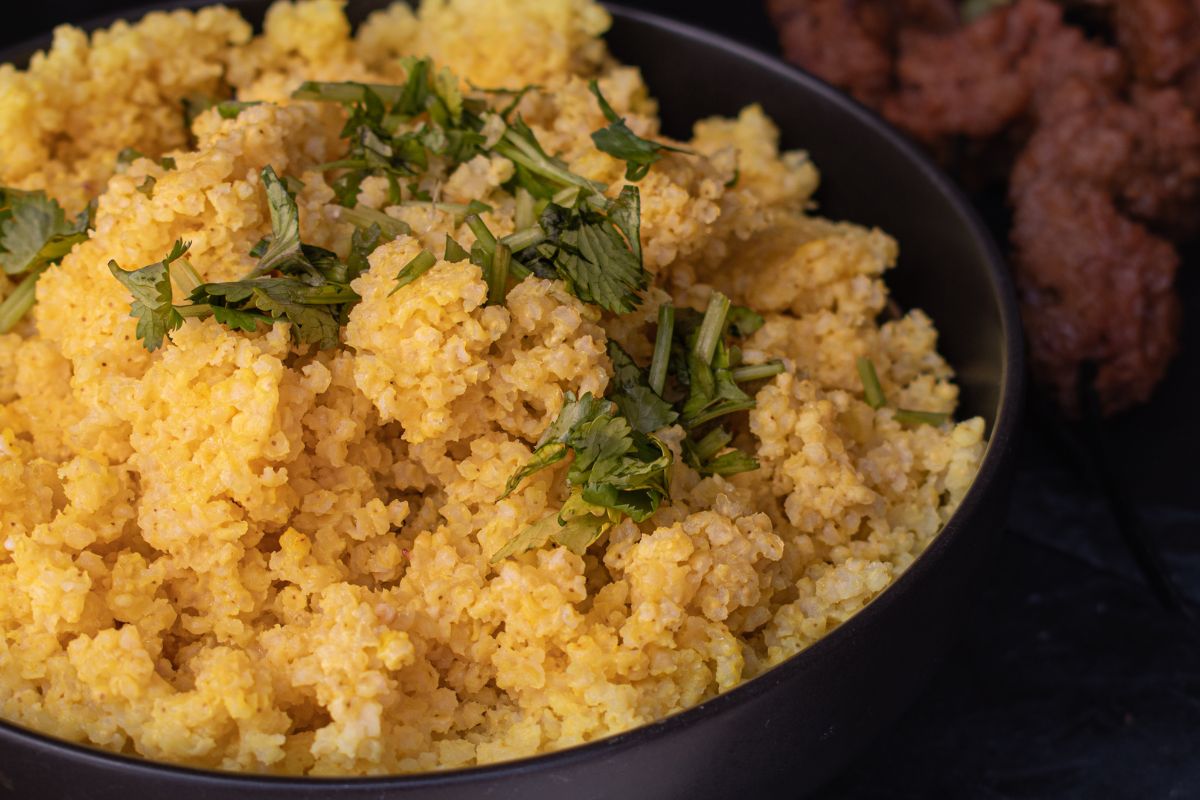
Thanks to this impressive nutrient content, millet can provide numerous benefits to anyone who consumes it. These are just some of the advantages that this grain can provide:
- It can help people to lose weight. This is mainly because it contains tryptophan. This amino acid can improve the quality of sleep and, most importantly, it can reduce your appetite. As a result, it’s easier to lose weight
- It has been found to reduce blood pressure. In particular, foxtail millet can help to control blood pressure
- Millet might reduce cholesterol. Namely, it helps to reduce triglycerides, which are a form of fat
What are the disadvantages of millet?
Though Millet has earned its status as a superfood, some people claim that millet is not worthy of this title.
They claim that the potential disadvantages of this grain prevent it from being an effective superfood. Here are some of the potential downsides to this food:
- Millet contains phytic acid. As a food inhibitor, this acid limits the absorption of certain vitamins and minerals, such as iron, magnesium, and potassium.
- Thyroid disruptor: If you consume too much millet, this grain can interfere with the thyroid gland
Frequently asked questions
Can you eat Millet daily?
Like most foods, it is okay to eat regular amounts of Millet as part of a balanced diet. As a natural, whole food, it’s a great addition to breakfast (as a hot cereal, similar to oatmeal) as well as lunch or dinner (as you can use it like you would rice). Cooked and cooled Millet can also be added to a salad or mixed in a muffin batter.
Is Millet healthier than Rice?
Yes, Millet is widely considered to be healthier than rice (for more rice vs millet facts, read here). The main reason for this is that it’s slightly higher in fiber.
Not to mention, Millet has a superior nutritional value thanks to its higher phosphorus, calcium, and iron content.
Final thoughts
Millet is widely considered to be a sensational superfood that’s packed with nutrients.
As a result, you can massively benefit from adding millet to your diet. As a versatile side dish, millet will pair nicely with a range of different foods.
This means that you can easily experience all of the nutritional benefits that millet has to offer!

